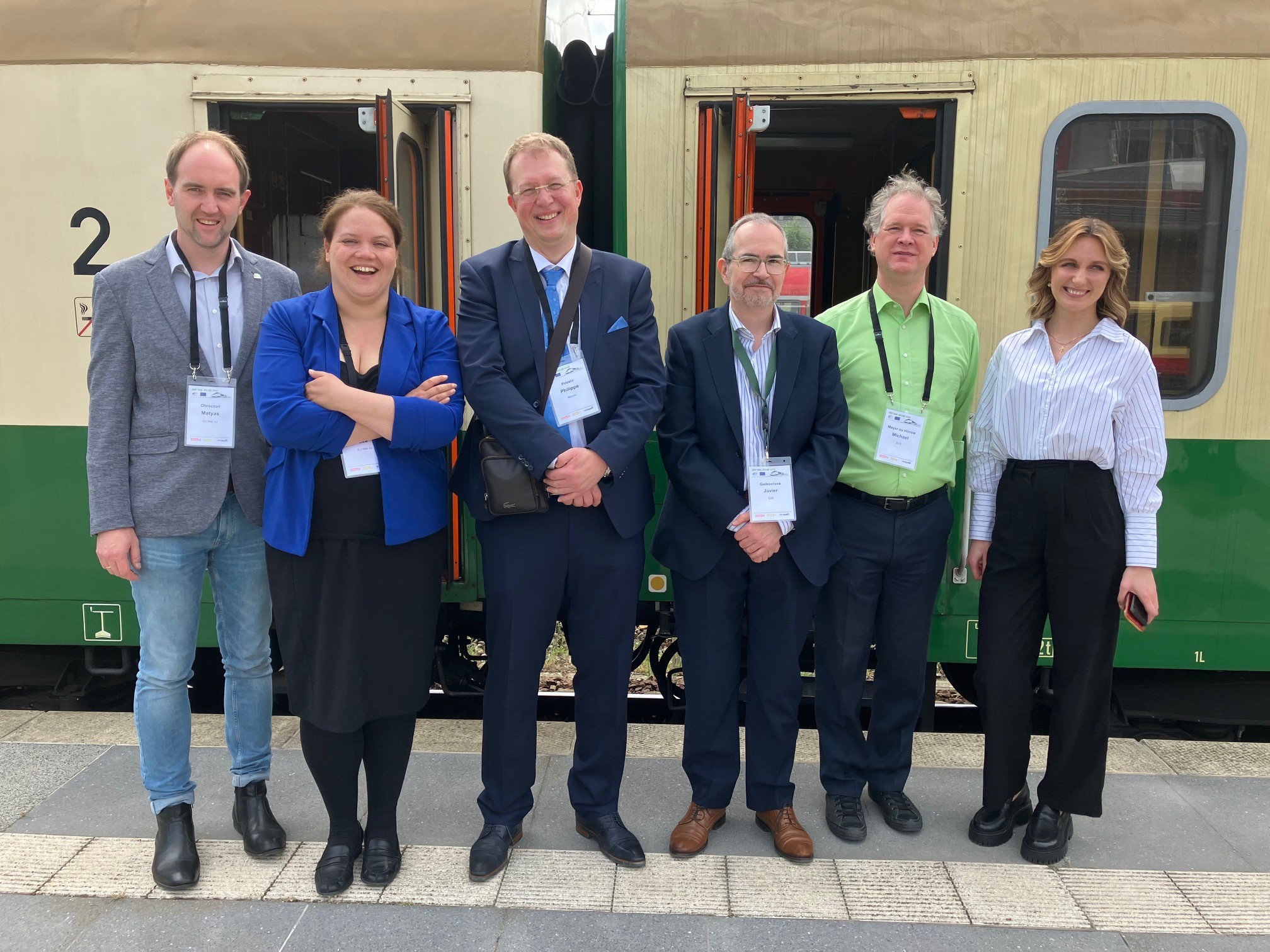Research from the three projects X2Rail-4, X2Rail-5 and TAURO presented in Berlin
Great potential lies in the automation and digitalisation of rail operation. Both can increase the reliability, speed and comfort of trains. For this reason, the German Aerospace Center (DLR) has conducted research within the scope of the three European projects X2Rail-4, X2Rail-5 and TAURO into technologies that could even enable driverless rail travel in the future and make it significantly more efficient through digitalised processes.
Dr Michael Meyer zu Hörste from DLR is the coordinator of the X2Rail-5 project and explains: "We have not only made considerable progress in fully automated rail travel, but have also optimised many of the processes involved. From telecommunications, through cybersecurity, and on to tracking: within the Europe-wide cooperation of industrial companies, railways and scientific institutions, we have been able to successfully further develop many technologies." The three projects X2Rail-4, X2Rail-5 and TAURO formed the conclusion of a series of projects from the European Europe’s Rail initiative and demonstrated the research results from recent years in practical implementation. "Our results highlight the potential of automated and digitalised rail transport. And what's more, how it can be realised in practice," said Dr Meyer zu Hörste.

In the X2Rail-4 project, coordinated by Alstom, the project participants successfully tested, for example, the fully automated driving of a train. This was particularly noteworthy in that the train was developed in accordance with European standards. As a result, it can run driverless not only on a route set up specifically for this purpose in one country, but throughout Europe on any infrastructure that has been prepared for this use.
In addition, the scientists in the TAURO project have further investigated in the validation and certification of environment perception systems, as well as identifying new use cases for such systems in daily rail operation, including train location for which a demonstrator was implemented. Supporting automation, TAURO has conducted research on remote train operation, not only in order to get the train moving again swiftly after incidents or other disruptions, but also for shunting and stabling operations in yards and depots. This is a type of remote control in which an operator can drive and command the train from a control centre. This enables it to help if a disturbance occurs or the automation has stopped the train. As a result, delays of automated trains are avoided and the smooth flow of traffic is ensured. The project was coordinated by Construcciones y Auxiliar de Ferrocarriles (CAF), a Spanish supplier of mobility solutions.
In the X2Rail-5 project, coordinated by DLR, the focus was directed on, amongst other aspects, the topic of "moving block". The idea behind this term is to have trains run at closer distnce in order for the track to be used more efficiently. This is made possible by permanent communication with the trackside. As the basis for driving in the "moving block", the researchers have also further developed adaptable telecommunication system. As a third element, they applied automatic supervision of train completeness called on-board train integrity supervision, i.e. each train was permanently checked for the presence of all its wagons. This is particularly important for freight trains in order to guarantee that no wagons can become lost unnoticed and subsequently endanger the following trains.
In a joint presentation with representatives of the 23 other European project participants, DLR presented the results of X2Rail-4, X2Rail-5 and TAURO in Berlin on the 23rd and 24th of May. A very special setting was provided by a train that carried the guests from Berlin to Dresden, in whose carriages a variety of technical presentations on the projects were given.
